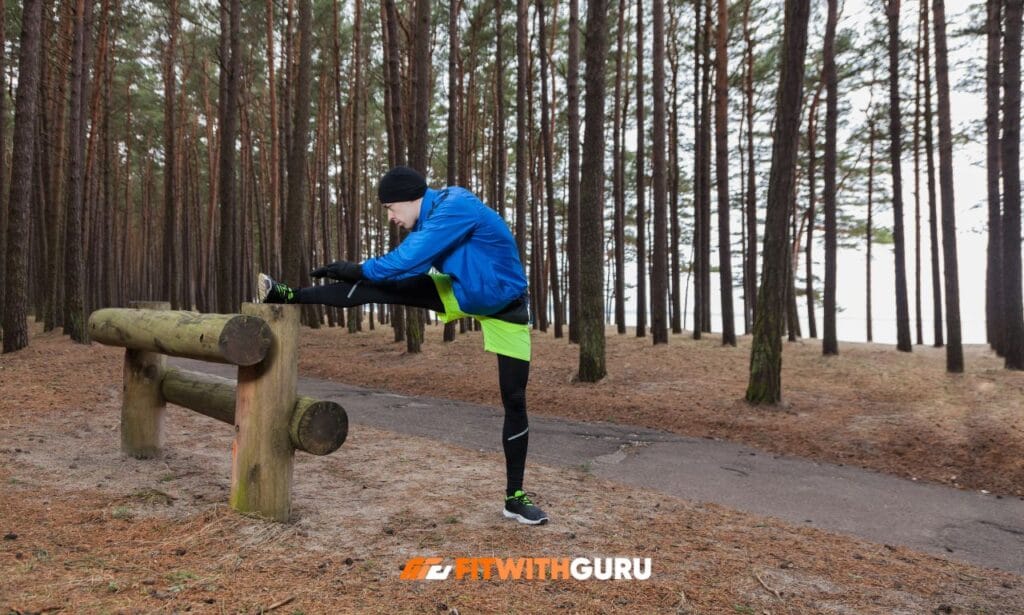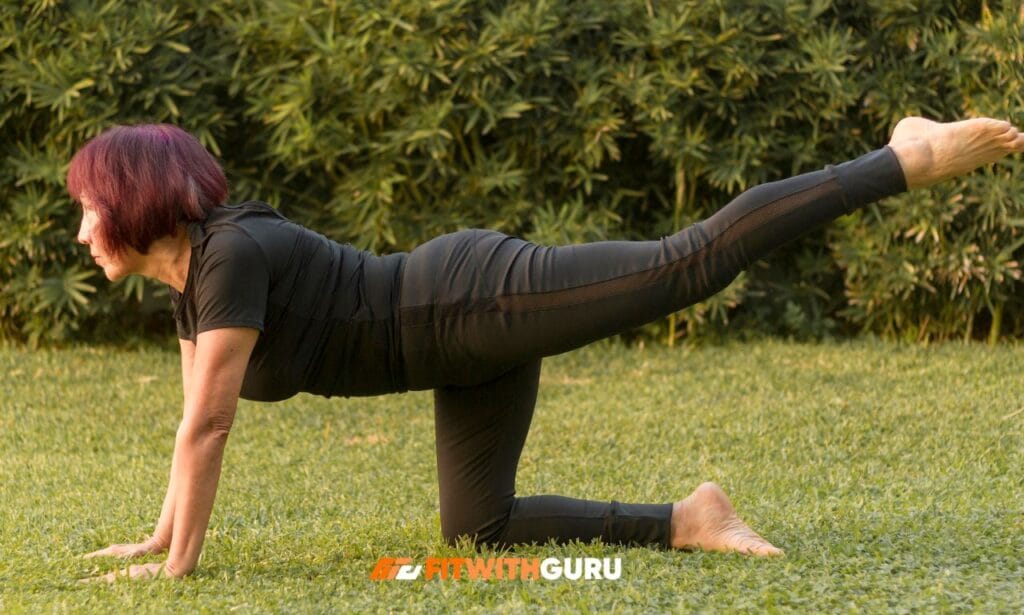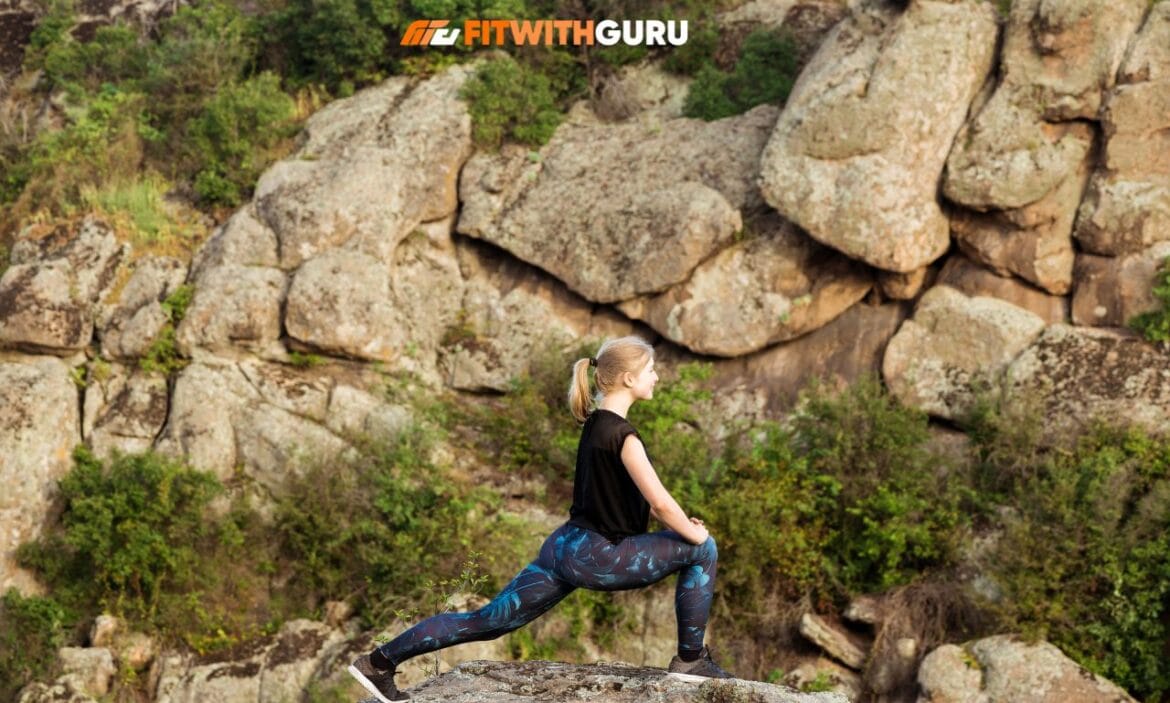Strength training for hikers has become the secret weapon that separates weekend warriors from elite trail conquerors. While many outdoor enthusiasts focus solely on logging miles on the trail, the most successful hikers understand that building strength off the mountain is just as crucial as time spent on it.
Picture this: you’re halfway through a challenging 15-mile trek when your legs start to wobble, your core feels weak, and every step becomes a struggle. The difference between hiking with confidence and barely making it to the trailhead lies in your commitment to strength training for hikers.
Why Strength Training for Hikers Matters More Than Cardio Alone
Most hikers make the critical mistake of believing that cardiovascular endurance is all they need to conquer challenging trails. However, strength training for hikers provides the foundation that cardio cannot deliver alone.
Research shows that hikers who incorporate strength training into their routine experience 35% fewer injuries and can hike 40% longer distances without fatigue. Your body needs to handle uneven terrain, sudden direction changes, and the constant stress of supporting your body weight plus gear.
Essential Lower Body Exercises Every Hiker Needs
The foundation of effective strength training for hikers starts with bulletproof legs that can handle thousands of steps across varied terrain.
Weighted Step-Ups: The Trail Mimicking Powerhouse
Step-ups represent the closest gym exercise to actual hiking movement patterns.

How to Perform Weighted Step-Ups:
- Position yourself facing a 16–20 inch box with dumbbells by your sides.
- Drive through your right heel to step up, bringing your left foot to meet.
- Step down with control, leading with your left foot first.
- Before swapping legs, finish all the repetitions on one side.
- Perform 3 sets of 12-15 repetitions per leg. Progress by increasing box height or weight gradually.
Single-Leg Romanian Deadlifts: Stability Meets Strength
Single-leg Romanian deadlifts build the posterior chain strength and balance required for navigating rocky, uneven terrain.
How to Perform Single-Leg Romanian Deadlifts:
- Stand on your right leg, holding a dumbbell in your left hand.
- Hinge at the hip, lowering the weight toward the ground.
- Extend your left leg behind you for counterbalance.
- Return to standing by squeezing your right glute.
- Complete 8-12 reps per leg for 3 sets. Start with bodyweight before adding external load
Lateral Lunges: Building Multi-Directional Strength
Lateral lunges in your strength training for hikers routine prepare your body for the side-to-side movements required on technical trails.
How to Perform Lateral Lunges:
- Stand with feet hip-width apart, toes pointing forward.
- Take a large step to the right, keeping your left foot planted.
- Sit back into your right hip, keeping your chest up.
- Push through your right heel to return to starting position. Do three sets of ten to fifteen repetitions per side.
Goblet Squats: Foundation Strength Building
Goblet squats form the cornerstone of strength training for hikers by building fundamental squatting patterns with added load.
How to Perform Goblet Squats:
- Using both hands, hold a dumbbell or kettlebell at chest height.
- Stand with feet slightly wider than hip-width apart.
- Lower down by pushing your hips back and bending your knees.
- Drive through your heels to return to standing. Perform 12-15 reps for 3 sets.
Core Stability Exercises That Transform Your Hiking Performance
Your core serves as the central hub that connects your upper and lower body during every hiking step. Effective strength training for hikers places enormous emphasis on core stability rather than just core strength.
Dead Bug: The Foundation Movement
The dead bug teaches your core to maintain stability while your arms and legs move independently—exactly what happens during hiking.
How to Perform Dead Bug:
- Stretch your arms straight up toward the ceiling while lying on your back.
- Bend your knees to 90 degrees with thighs perpendicular to the floor.
- Slowly lower your right arm overhead while extending your left leg.
- Return to starting position with control. Do 3 sets of 8–10 reps on each side.
Plank Variations: Beyond Basic Holds
Standard planks are just the beginning of effective core training in strength training for hikers.
How to Perform Standard Plank:
- Place your forearms on the floor and begin in the push-up posture.
- From head to heels, maintain a straight body alignment. Hold for 30-60 seconds, building up gradually
Plank Progression Variations:
- Single-Arm Plank: Lift one arm forward while maintaining plank position
- Side Plank: Rotate to your side, stacking feet and supporting on one forearm. Perform each variation for 20-30 seconds, 3 sets total
Bird Dog: Dynamic Stability Training
Bird dog combines stability challenge with strength demands crucial for strength training for hikers.

How to Perform Bird Dog:
- Place your wrists beneath your shoulders and begin on your hands and knees.
- At the same time, extend your left leg backward and your right arm forward.
- Hold while keeping your balance for three to five seconds. Do 3 sets of 8–10 reps on each side.
Upper Body and Functional Movement Integration
While hiking is primarily a lower body activity, your upper body plays a crucial support role during challenging terrain.
Farmer’s Walks: The Ultimate Functional Exercise
Farmer’s walks simulate carrying a heavy pack while building grip strength, core stability, and postural endurance.
How to Perform Farmer’s Walks:
- Hold heavy kettlebells or dumbbells by your sides.
- Stand tall with shoulders back, core engaged. Walk forward maintaining perfect posture.
- Walk for 40-60 seconds. Perform 3-4 sets, gradually increasing weight.
Pull-Ups and Rows: Building a Strong Back
A strong back prevents the forward slouch that develops during long hikes with heavy packs.
How to Perform Pull-Ups:
- Place your hands shoulder-width apart and hang from a pull-up bar.
- Squeeze your shoulder blades to pull your chest toward the bar.
- Lower yourself with control to the starting position. Aim for 5-10 repetitions, using assistance if needed.
How to Perform Bent-Over Rows:
- Hold dumbbells with feet hip-width apart.
- Hinge at the hips, keeping your back straight.
- Pull the weights to your lower ribs, squeezing shoulder blades • Perform 10-12 reps for 3 sets.
Push-Up Variations: Upper Body Endurance
Push-ups build the upper body endurance required for using trekking poles and maintaining arm strength during long hikes.
How to Perform Standard Push-Ups:
- Place your hands beneath your shoulders and begin in the plank position.
- Lower your chest toward the ground with control.
- Push back up to starting position. Perform 10-15 reps for 3 sets.
Creating Your Weekly Strength Training Schedule
Effective strength training for hikers requires strategic planning that complements rather than conflicts with your hiking schedule.
The 3-Day Split Approach
Monday: Lower body focus with squats, deadlifts, and step-ups. Wednesday: Core and stability with planks, dead bugs, and single-leg exercises. Friday: Upper body and functional movements with farmer’s walks and pull-ups. This schedule allows 48 hours of recovery between sessions while maintaining consistency.
Periodization for Hiking Seasons
Adjust your strength training for hikers based on your hiking season and goals.
| Training Phase | Focus | Rep Range | Sessions/Week |
| Off-Season | Maximum Strength | 4-6 reps | 3-4 |
| Pre-Season | Power Endurance | 8-12 reps | 3 |
| In-Season | Maintenance | 6-10 reps | 2 |
Advanced Techniques for Experienced Hikers
Once you’ve mastered basic strength training for hikers, advanced techniques can take your performance to the next level.
Weighted Vest Training
Incorporating a weighted vest into your strength training for hikers routine prepares your body for hiking with a loaded pack.
How to Perform Weighted Vest Exercises:
- Start by wearing a garment that is 10% heavier than you are.
- Weighted Vest Step-Ups: Perform step-ups with added vest weight.
- Weighted Vest Walks: Walk for 20-30 minutes with vest. Progress weight by 5-10 pounds every 2-3 weeks.
Unstable Surface Training
Training on unstable surfaces improves the proprioception required for rocky, uneven trails.
How to Perform Unstable Surface Exercises:
- BOSU Ball Squats: Stand on dome side, perform bodyweight squats.
- Single-Leg Balance: Stand on one leg on foam pad for 30-60 seconds.
- Start with 20-30 seconds, building to 60-90 seconds.
Plyometric Training: Power Development
Plyometric exercises develop the explosive power needed for navigating technical terrain.
How to Perform Box Jumps:
- Stand in front of a 12-18 inch box.
- Jump onto the box, landing softly with both feet. Step down to preserve your joints. Perform 5-8 jumps for 3 sets.
Injury Prevention Through Smart Programming
The primary goal of strength training for hikers should always be injury prevention first, performance enhancement second.
Addressing Common Weak Spots
Hikers typically develop imbalances from repetitive forward movement patterns. Hip flexor tightness, weak glutes, and poor ankle mobility are common issues. Your strength training for hikers routine should include exercises that address these specific weaknesses.
Progressive Overload Principles
Gradual progression prevents injury while ensuring continued adaptation. Increase weight, reps, or difficulty by no more than 10% per week. Your body needs time to adapt to new demands, especially when preparing for challenging hiking objectives.
Frequently Asked Questions
How often should hikers do strength training?
Strength training for hikers works best with 2-3 sessions per week, allowing 48 hours of recovery between sessions targeting the same muscle groups. Beginning with two sessions per week, beginners should work their way up to three as they adjust.
Should I strength train on the same days I hike?
Avoid doing intense strength training for hikers on the same day as long or challenging hikes. If you must combine both, perform a light strength session before an easy hike, or strength train after a short, easy hike.
What equipment do I need for strength training as a hiker?
Basic strength training for hikers requires minimal equipment: dumbbells, resistance bands, and access to a box or bench for step-ups. Bodyweight exercises form the foundation of any good hiking strength program.
How long before I see results from strength training?
Most hikers notice improvements in strength training for hikers within 2-3 weeks of consistent training. Strength gains typically appear first, followed by muscle size changes after 6-8 weeks.
Can strength training replace hiking for fitness?
While strength training for hikers provides crucial benefits, it cannot fully replace time spent on trails. The most effective approach combines regular strength training with consistent hiking practice.
Conclusion
Strength training for hikers represents the foundation upon which all great hiking adventures are built. The seven powerful exercises and strategies outlined in this guide provide a comprehensive approach to building the strength, stability, and endurance required for challenging trails.
Remember that consistency trumps perfection, two quality strength training sessions per week will transform your hiking performance more than sporadic intense workouts. Start with the basic exercises, progress gradually, and watch as your hiking endurance and enjoyment reach new heights.

